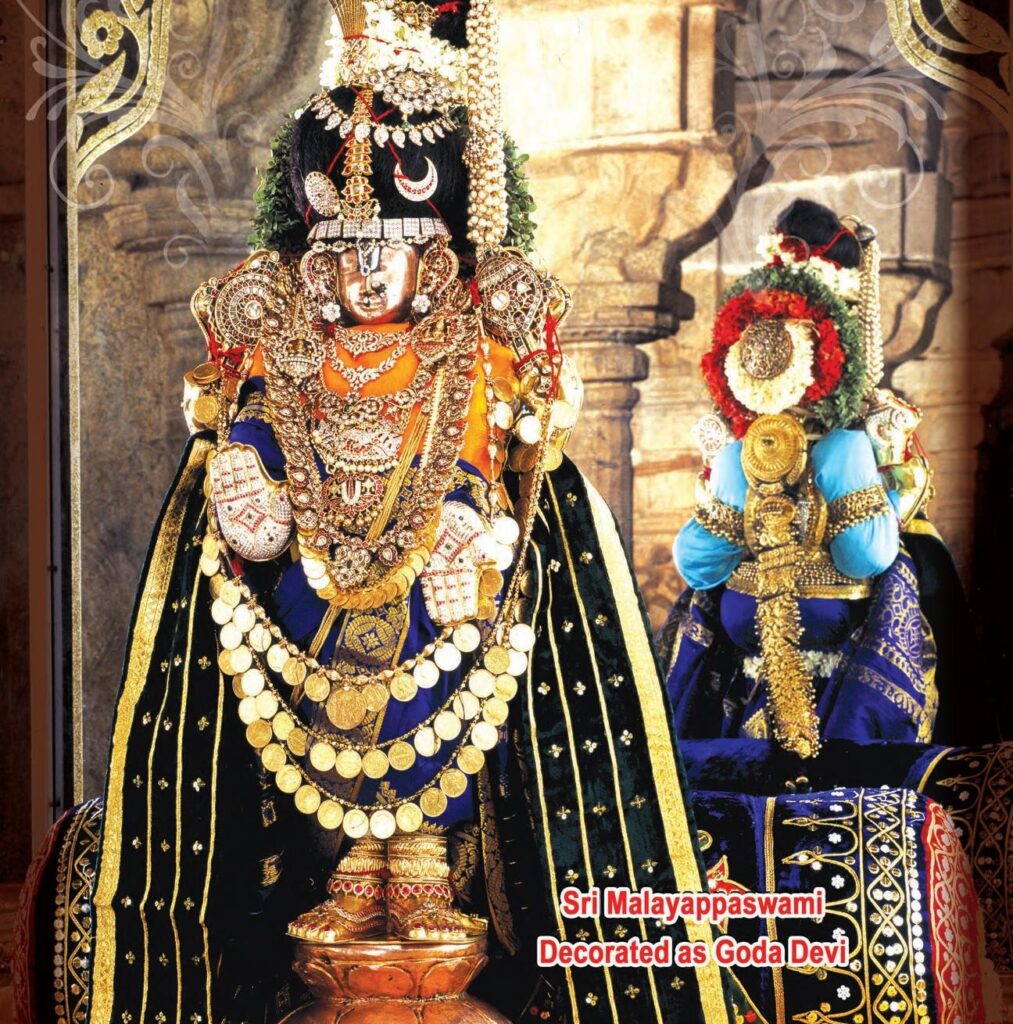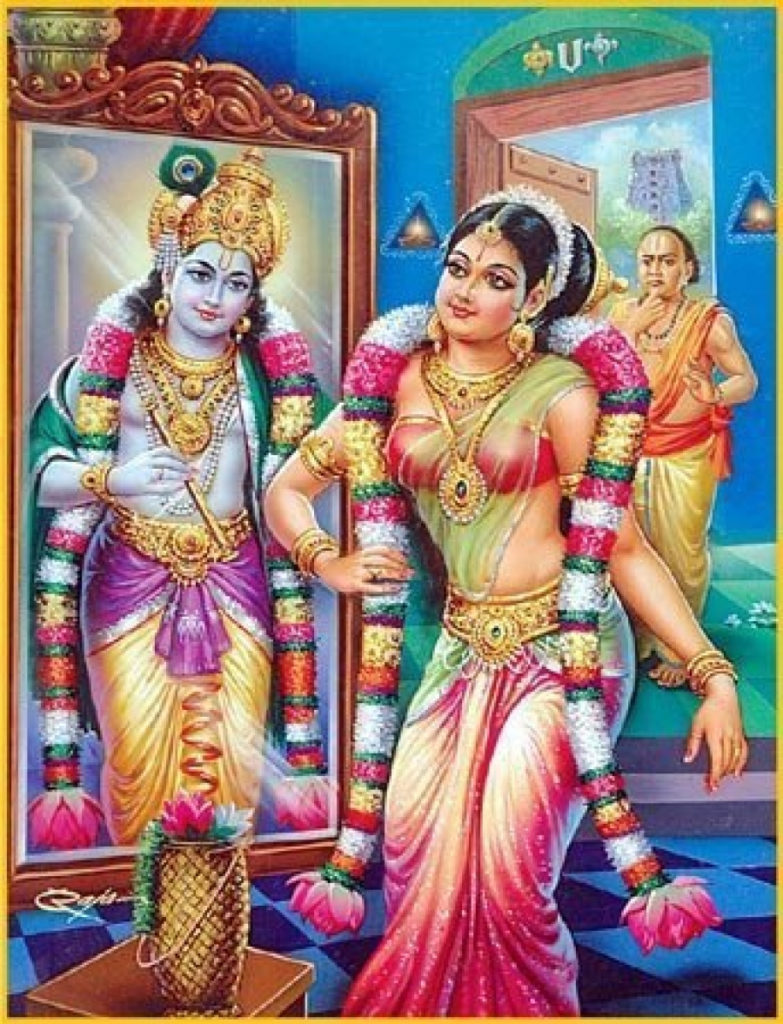On the day of Bhogi which is the last day of Dhanurmasa, the marriage of Goda Devi is celebrated. As soon as the Sun god enters Dhanushrasi, the month of Dhanurmasa commences. The Dhanurmasa remains up to Bhogi. In all temples of Vaishnavaites, the pasurams of the Divine known as TIRUPPAVAI are recited in the early mornings during this Dhanurmasa.
No Suprabhatam during Tiruppavai
In this month, the recitation of Suprabhata is not conducted, instead, Tiruppavai is sung. Godadevi, one of the twelve Alwars Composed this Tiruppavai.
Vishnuchitta
Sri Villiputtur is a village 60 kilometers away from Madurai in Tamilnadu. Therein 725 AD, Bhattanadha was born to the humble parents Mukundacharya and Padmavati, Later Bhattanadha was called “Vishnuchitta”.
Every day, he used to worship God with Tulasi, flower garlands, and offered pujas by composing and reciting Tiruppaland dedicating to Vatapatrasai. As a result, Vishnuchitta was named “Perialwar” which means a great devotee.
Vishnuchitta finding a baby
Once Vishnuchitta discovered a beautiful baby in his grown Tulasi garden felt elated as if goddess Sita was found in the garden. Hence, Vishnuchitta named her “Kodai” in the sense of garland. Over time, she was called “Godadevi”.
Godadevi just like her father nourished and nurtured extreme devotion towards Lord Krishna and at times observed herself in a state of bliss by culminating herself at the feet of Lord Krishna.
Sometimes, she felt ecstatic, when her father made her listen to the divine dispensation, involved herself as a gopika, and loved Lord Krishna as Gopika did in Nandanavana. She also treated him as her husband. She used to garland herself decorated by her father to Lord Krishna.
Story behind Garlands
In addition, she became jubilant by seeing her reflections. Adorning herself with valuable jewels, flowers, and dress, she tried to feel whether she deserved to be beloved of Lord Krishna, questioning herself in her heart of hearts. Noticing this, her father became angry and decided not to garland Lord Krishna which was worn by his daughter.
But one day, Lord Krishna appeared in his dream and told him that she was born virtually as an incarnation of the Goddess of Earth (Bhoodevi), and took birth on the earth to compose hymns in praise of the Lord. Her worn garlands would lend charm and fragrance to Me said Krishna, emotionally moved by this dream Perialwar fondly called her “You are Andal” shedding tears with happiness. Andal means the savior.

Goda devi – Katyani Vratha
Such Godadevi worshipped Lord Krishna to be her husband and performed Katyani Vratha in Dhanurmasa. After some time, Sri Ranganadha, the presiding deity of Srirangam, appeared to Perialwar in a dream and ordained him to see her reach His shrine. At last, Goda Devi married Sri Ranganadha and sublimated herself in the Lord.
Dhanurmasam in Tirumala
That very day is regarded as Bhogi, the last day of Dhanurmasa. As a symbol, the Tirumala Tirupati Devasthanams grandly celebrate Godadevi’s marriage. It is popularly believed those who witnessed this holy marriage would get married soon as well and it strengthens the marital bondage between the couple and women’s chastity would last long.
Dhanurmasa concludes on the day of Bhogi. Goda Kalyanam is celebrated on this day in grandeur. It is performed in the Andal Sannidhi of Sri Govindaraja Swami Temple, Tirupati. On that day the garlands from this Andal Sannidhi are sent to Tirumala temple to adorn them on the Main Deity.

